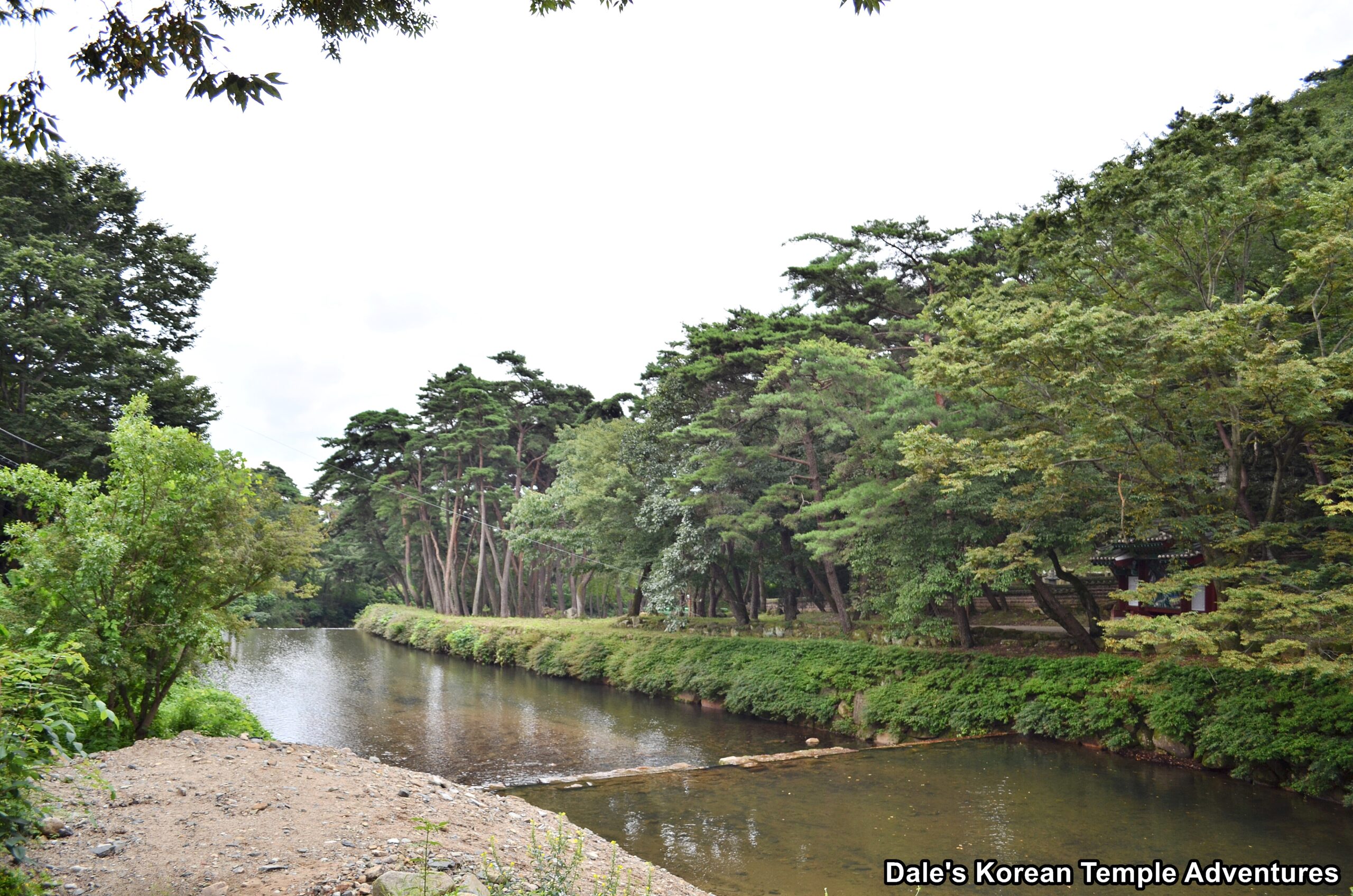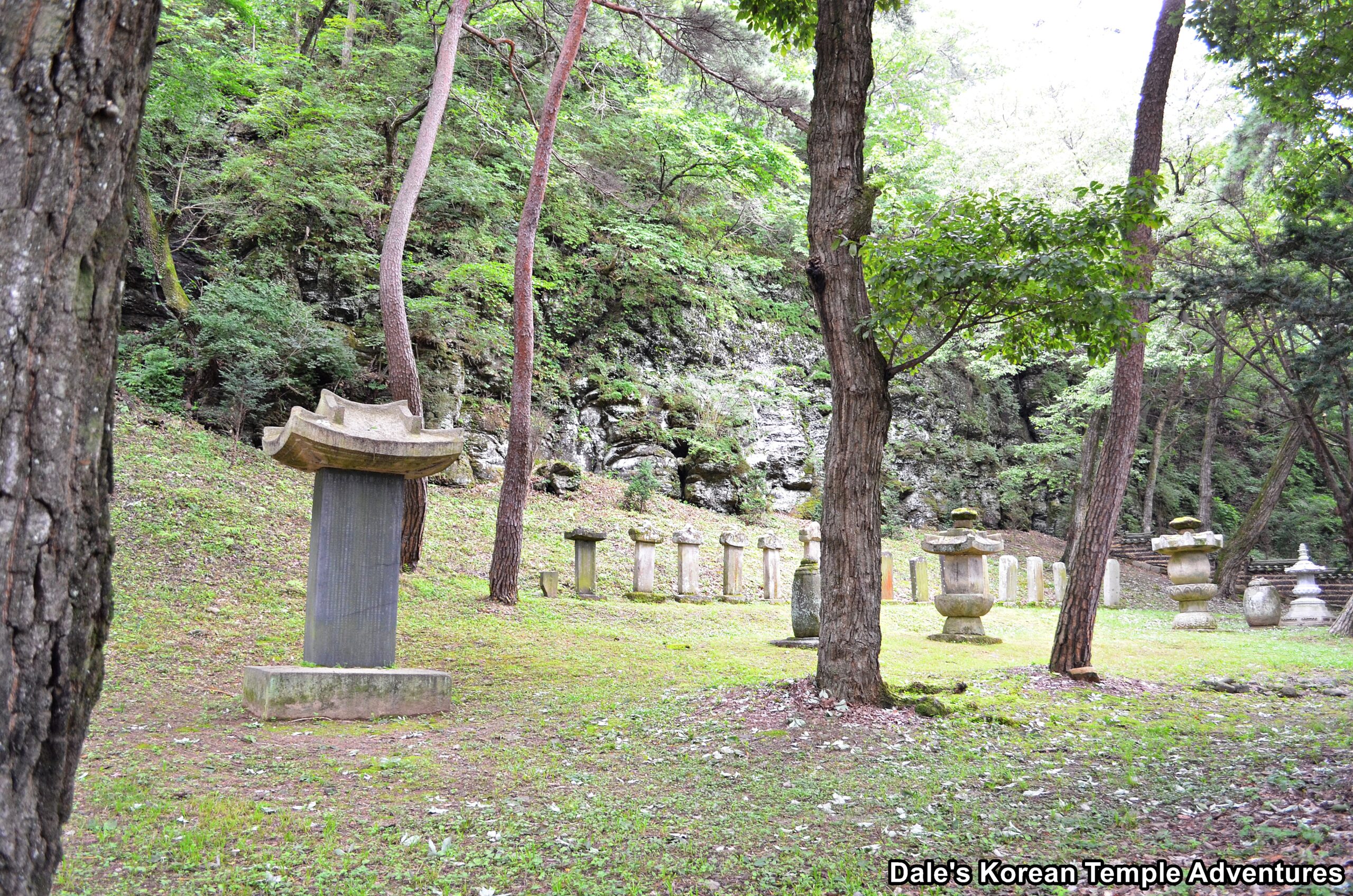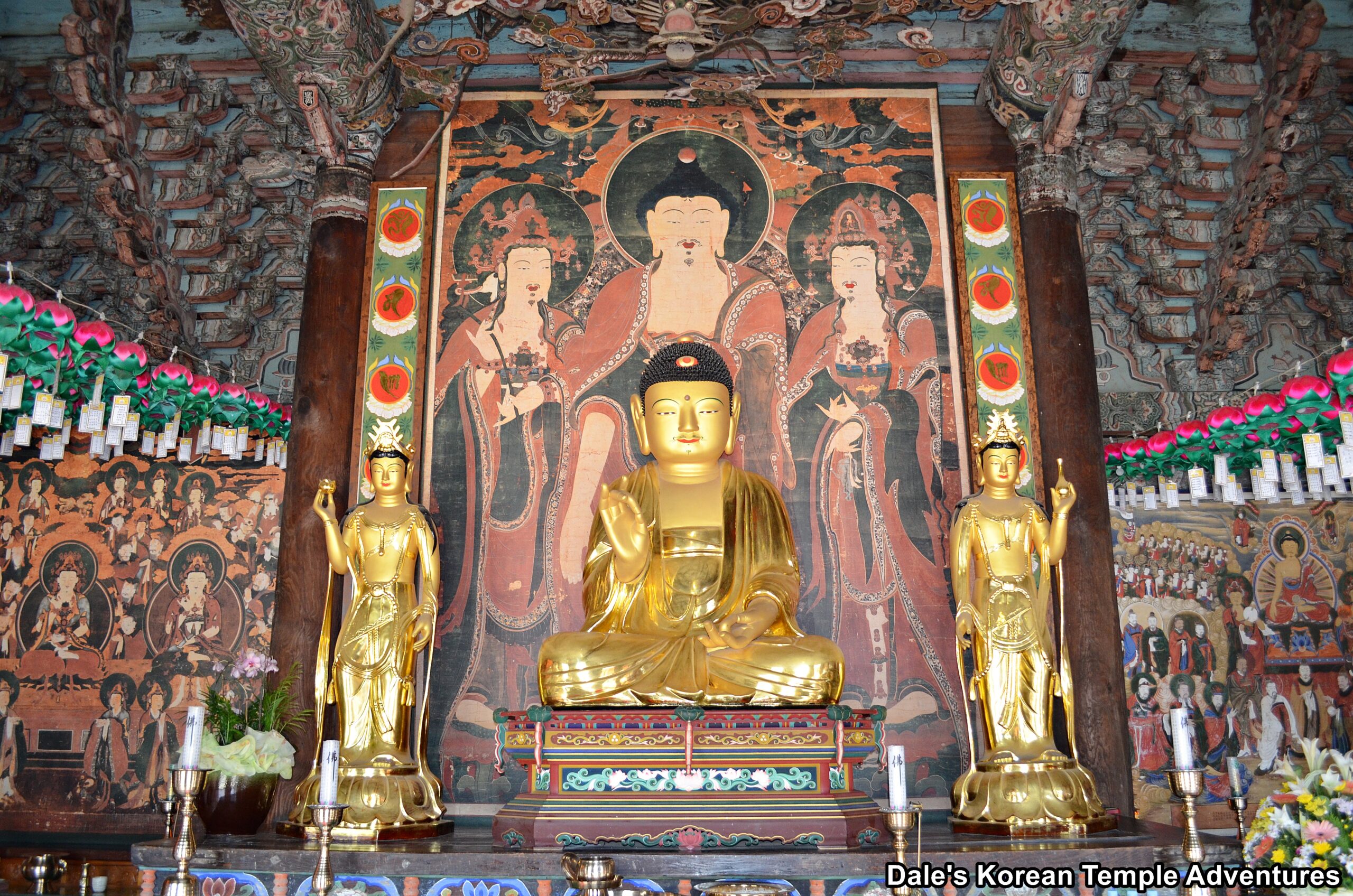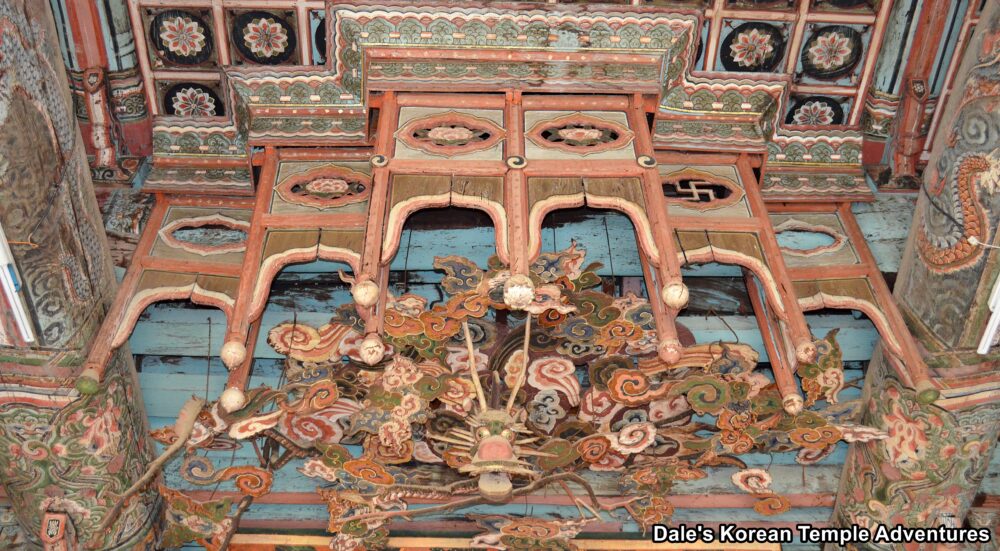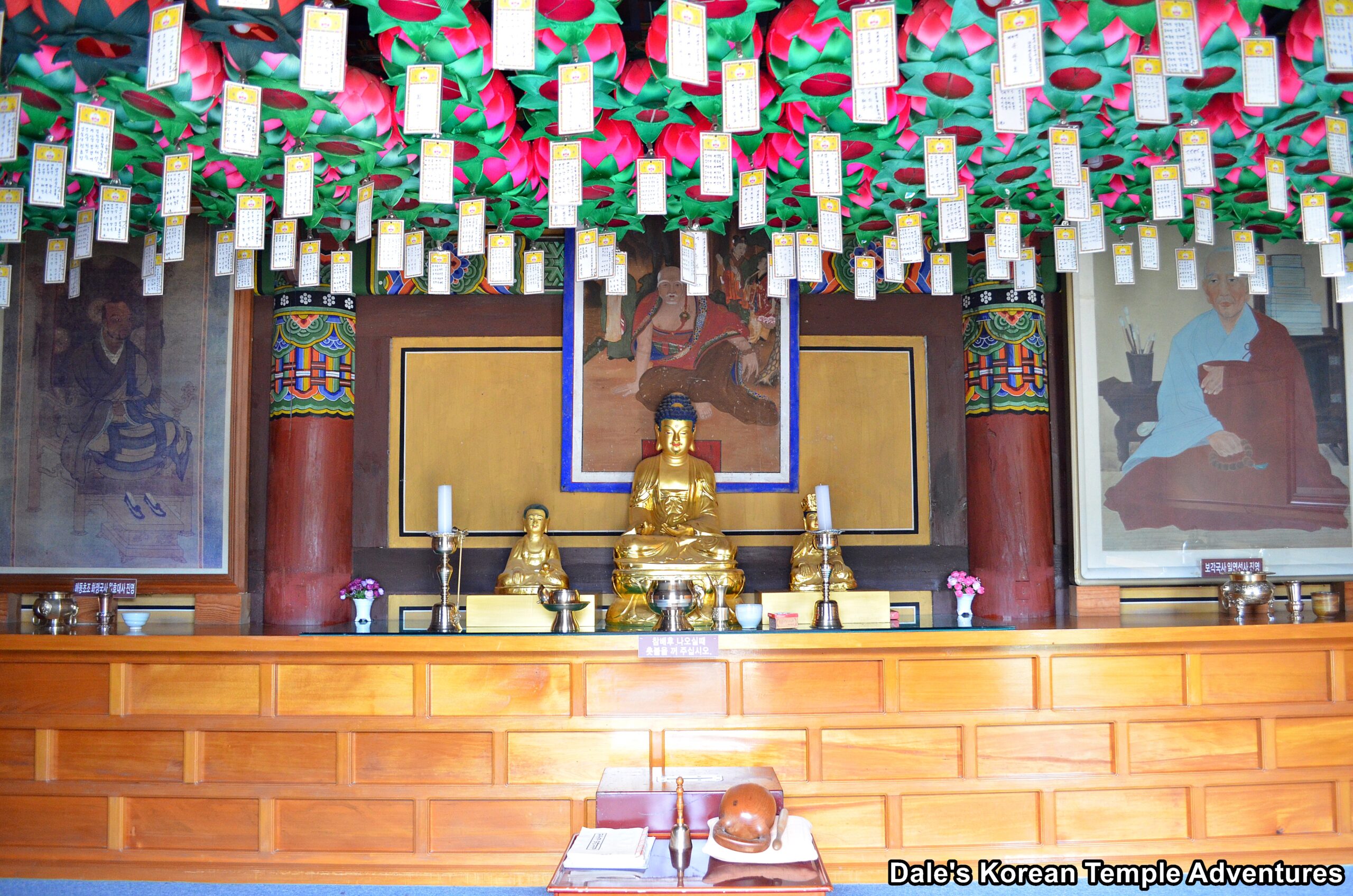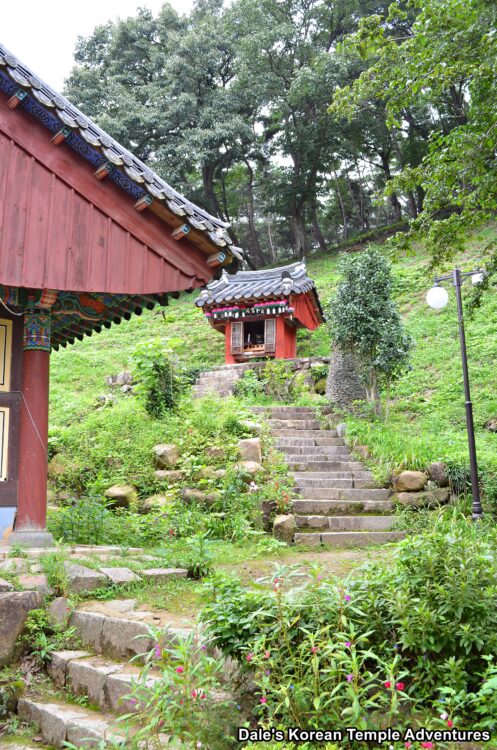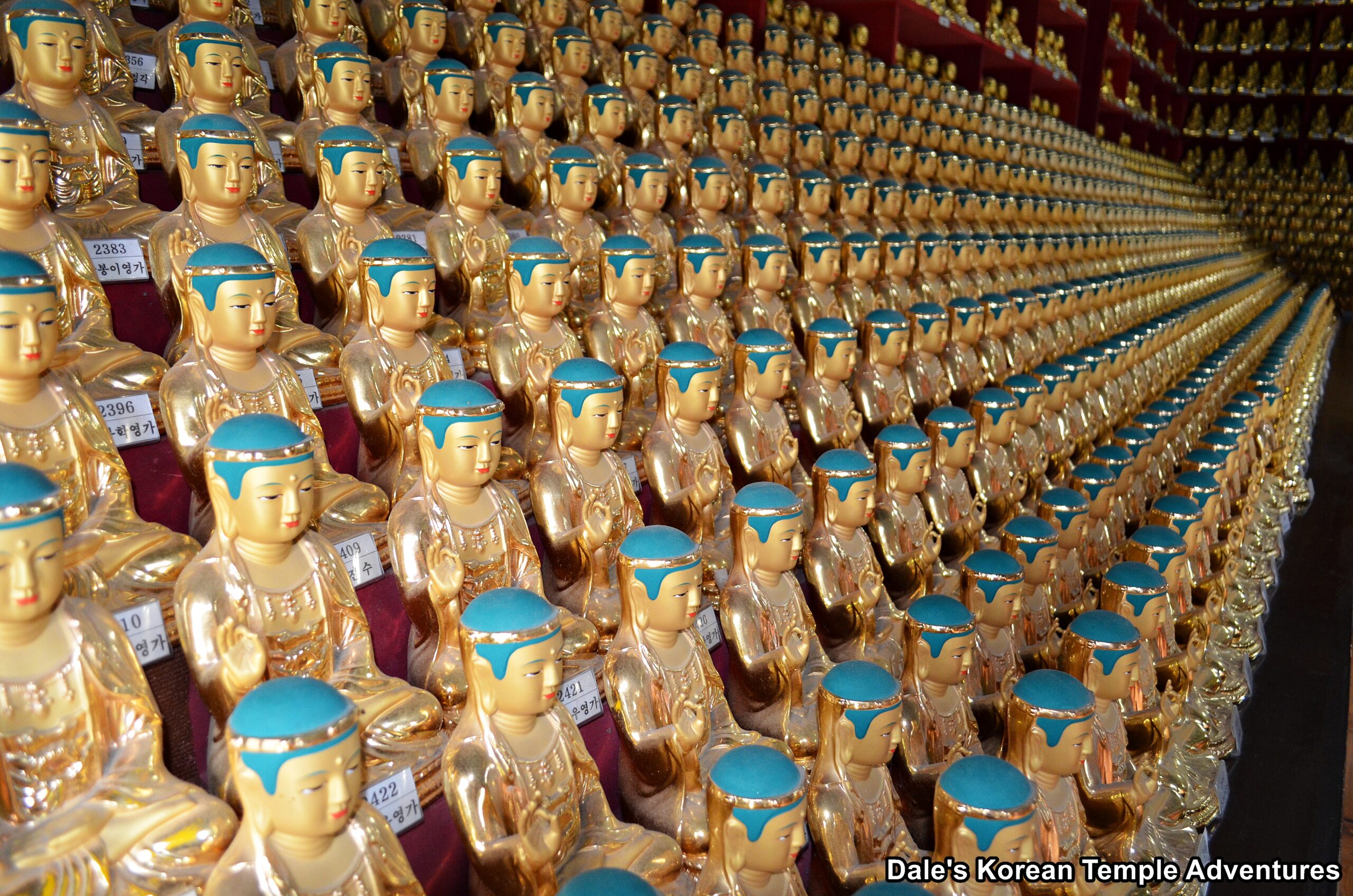Eunhaesa Temple – 은해사 (Yeongcheon, Gyeongsangbuk-do)

Temple History
Eunhaesa Temple, which means “Silver Sea Temple” in English, is located on the far east side of Mt. Palgongsan (1192.3 m) in Yeongcheon, Gyeongsangbuk-do. The name of the temple has a double meaning. The first is that Buddhas, Bodhisattvas, and Nahan (Historical Disciples of the Buddha) look like a wavy silver sea in all their grandeur. Another meaning is that on a foggy day at Eunhaesa Temple, it looks like a wavy sea. Eunhaesa Temple was first established in 809 A.D. by the monk Hyecheol-guksa. Originally, the temple was named Haeansa Temple, which means “Tranquil Sea Temple” in English.
The temple was reconstructed in 1264 by Hongjin-guksa. It was further expanded in 1270 and 1275 by the monk Wongham. And in 1485, it was further expanded and reconstructed by the monks Jukcheong and Uichan.
The temple was then moved to its present location in 1546 by the monk Chongyo after the original was destroyed by fire in 1544. The original location of Eunhaesa was near Unbuam Hermitage to the north-west of the temple’s current location. During the commemorative ceremony to mark this occasion, King Injong of Joseon (r.1544-1545) was memorialized with a ceremony that saw a lecture hall and monument built in King Injong’s honour. Rather strangely, King Injong of Joseon’s umbilical cord was buried under the monument that commemorates him. It was at this time that Eunhaesa Temple was renamed to its current name. The temple was further expanded in 1589 by monks Beopryong and Gwangshim. It’s from this period that the oldest buildings at Eunhaesa Temple date back to. In 1919, the temple was designated as the provincial headquarters for Gyeongsangbuk-do during Japanese Colonial Rule (1910-1945).
In total, there are eight hermitages that are directly associated with Eunhaesa either on or near its expansive temple grounds including the famous Geojoam Hermitage. Eunhaesa Temple also participates in the highly popular Temple Stay program. Eunhaesa Temple is also home to three Korean Treasures. And the hermitages that surround it are home to one National Treasure and three additional Korean Treasures.
Temple Layout
When you first approach the temple grounds from the parking lot, and after paying your entry fee, you’ll pass under a massive eight pillar entry gate. Walking along the trail that leads up to the main temple grounds, you’ll be greeted by twisted red pines that were first planted in 1714. Along the way, you’ll notice a budo-won, which is home to a collection of stupas dedicated to monks that once called Eunhaesa Temple home. Further up the trail, you’ll catch your first glimpse of the main temple courtyard and a neighbouring cascade of water.
To gain entry to the main temple courtyard, you’ll need to pass under the Bohwa-ru Pavilion, which has a large lecture hall on the second story of the structure. On either side of the entry are a pair of Geumgang-yeoksa (Vajra Warriors). Stepping into the main temple courtyard, you’ll notice the two-story Jong-ru (Bell Pavilion) to your left. Immediately in front of the bell pavilion is an intricately designed water fountain and study hall. To the far right, as you step into the expansive courtyard, you’ll see the monks quarters, which are strictly off-limits to visitors.
Straight ahead of you, on the other hand, is the beautifully designed Geukrakbo-jeon Hall. The exterior walls to the main hall are adorned with chipped and fading Shimu-do (Ox-Herding Murals). While these murals have seen better days, you can still see the brilliance of the original compositions. Entering into the Geukrakbo-jeon Hall, you’ll see one of the most intricately and beautifully decorated main halls in Korea. Seated on the main altar is the central image of Amita-bul (The Buddha of the Western Paradise). This statue is joined on either side by two standing statues dedicated to Gwanseeum-bosal (The Bodhisattva of Compassion) and Daesaeji-bosal (The Bodhisattva of Wisdom and Power for Amita-bul). The triad is then protected by a beautiful canopy with an ancient dragon protruding intimidatingly out towards the observer.
To the left and right of the main altar triad are a collection of paintings. To the main altar’s immediately right is an older mural dedicated to Chilseong (The Seven Stars). This painting is then joined to the right by a smaller sized replica print of the temple’s historic Gwaebul. The original Gwaebul of Eunhaesa Temple is Korean Treasure #1270. The original mural was first painted in 1750, and it stands 10.56 metres in height and 4.74 metres in width. And to the left of the main altar is a red Shinjung Taenghwa (Guardian Mural). The rest of the entire interior of the Geukrakbo-jeon Hall is filled with various murals including dragons and Bicheon (Flying Heavenly Deities), as well as two small wooden figures that are meant to depict birds of paradise flying around near the ceiling of the structure. The Geukrakbo-jeon Hall is believed to date back to the 19th century, and it’s Gyeongsangbuk-do Cultural Material #367.
To the left rear of the main hall, you’ll find the Josa-jeon Hall. The central image, rather interestingly, is a painting dedicated to Dokseong (The Lonely Saint). The rest of the Josa-jeon Hall is filled with murals of prominent Korean monks like Ilyeon (1206-1289) and Wonhyo-daesa (617-686 A.D.). And behind this Josa-jeon Hall is a compact shrine, the Sanryeong-gak, which has a beautiful bluish-gray statue of Sanshin (The Mountain Spirit) inside it.
And to the right rear of the Geukrakbo-jeon Hall is the temple’s Jijang-jeon Hall. Housed inside this shrine hall you’ll find an elevated statue of Jijang-bosal (The Bodhisattva of the Afterlife) on the main altar. This main altar image of Jijang-bosal is joined by rows of smaller sized figurines dedicated to the Bodhisattva of the Afterlife.
How To Get There
There are two ways that you can get to Eunhaesa Temple. The first is to take a bus from the Hayang bus terminal, and the other way is from the Yeongcheon bus terminal. The bus ride costs about 2,500 won. Of the two, it’s easier to get to Eunhaesa Temple from the Yeongcheon bus terminal. The bus from the Yeongcheon bus terminal leaves eight times a day, and it takes about forty-five minutes to get to Eunhaesa Temple.
Overall Rating: 8/10
The Geukrakbo-jeon Hall at Eunhaesa Temple is definitely the main highlight with its beautiful murals, wood carvings, and the triad of statues on the main altar. Adding to the main hall’s stunning beauty is the Sanryeong-gak Hall that houses a unique image of Sanshin (The Mountain Spirit) and murals housed inside the Josa-jeon Hall of prominent Korean monks. In addition to Eunhaesa Temple, and if you have the time, you should explore the eight hermitages that dot the mountainside. But be forewarned, they’re not the easiest to hike to, as they’re up in the Mt. Palgongsan mountain range.
